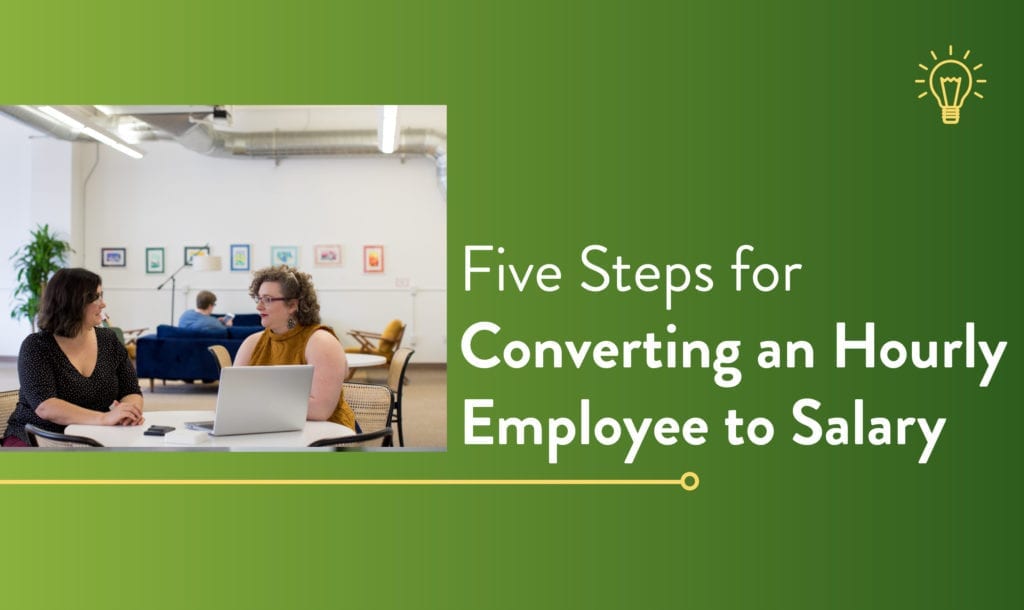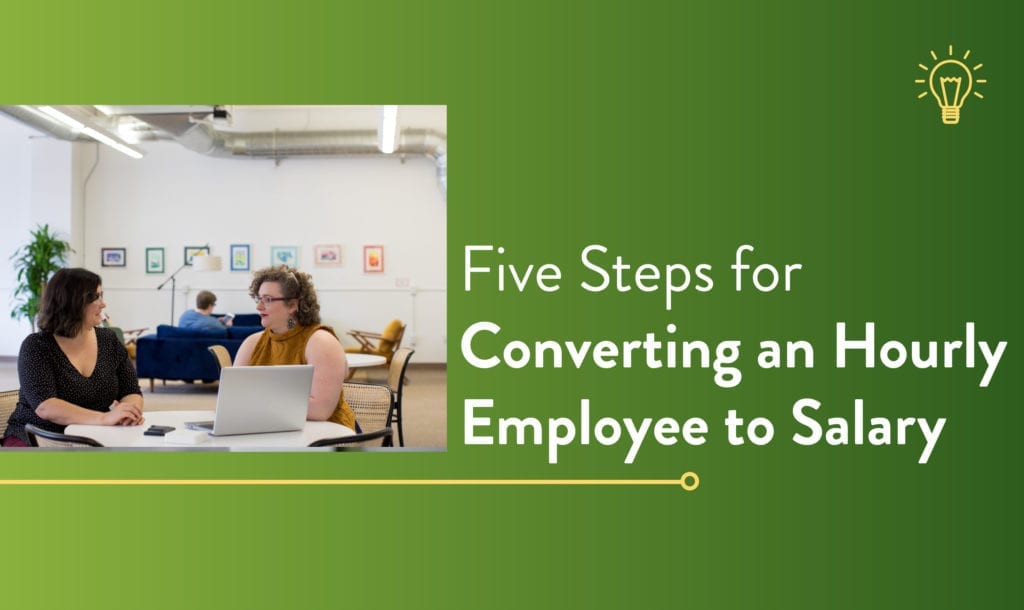
You might decide to move an employee from hourly to salary because he or she has been promoted or given more responsibilities. Or maybe you want to simplify payroll-cost estimation, as salaried employees are usually paid a fixed amount.
But before you do the conversion, it’s essential to consider the employee’s classification. Hourly employees are usually nonexempt and eligible for overtime under the Fair Labor Standards Act (FLSA). (An employee can be hourly yet exempt from overtime, but these situations aren’t common.)
Salaried employees are usually exempt and ineligible for overtime under the FLSA. (An employee can be salaried yet nonexempt, but again, these scenarios aren’t typical.) With that in mind, follow these five steps.
Step 1
Examine the job duties that the hourly employee will perform as a salaried worker to determine whether he or she will be exempt or nonexempt. This means analyzing the FLSA’s job duties test for the respective position plus any state exemption tests. (Some states have their own job duties criteria that employees must satisfy to qualify as exempt.)
If the employee will perform exempt job duties, then he or she will be salaried-exempt, and you do not need to pay overtime for extra hours worked.
If the employee will not perform exempt job duties, then he or she will be salaried-nonexempt, and you must pay overtime wages for all overtime hours worked.
Step 2
Determine the amount of salary to pay the employee.
If the employee will be salaried-exempt, you must pay no less than the FLSA- or state-required amount — whichever is higher. Under the FLSA, salaried-exempt employees must receive at least $455 per week. Also, you cannot make deductions from salaried-exempt employees’ pay unless the deductions are permitted by the FLSA or state law.
If the employee will be salaried-nonexempt, you must pay no less than the FLSA- or state-required minimum wage — whichever is higher. The FLSA’s minimum wage is $7.25/hour.
Step 3
Make sure the employee knows about — and agrees to — the switch. The conversion should not come as a surprise. The reasons for the switch; modifications in job duties, work schedule, pay and benefits; and any other specifics should be clearly communicated to the employee in writing and ahead of time.
Step 4
Decide how to handle timekeeping and record-keeping for the employee.
Under the FLSA, you do not have to track work hours for salaried-exempt employees (though you can choose to do so). However, you must maintain certain payroll records for salaried-exempt employees, including their total earnings for the pay period.
If the employee is salaried-nonexempt, you must comply with the FLSA’s record-keeping requirements for nonexempt employees. This includes tracking total hours worked each day and week.
Step 5
Make the necessary changes in your HR and payroll systems. Be sure to give your payroll service provider any information it needs to accurately process the change.
Copyright 2020









